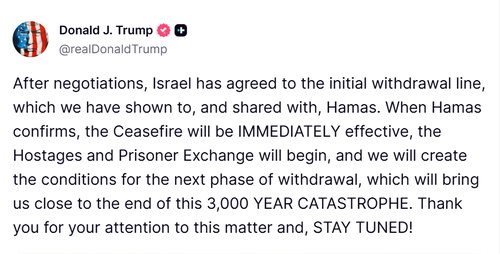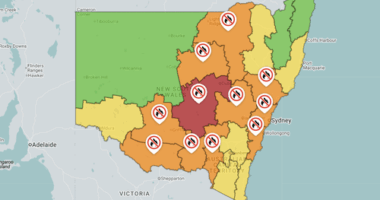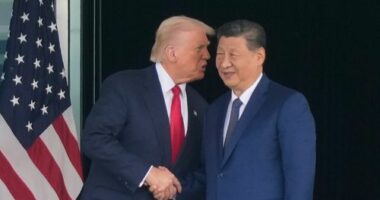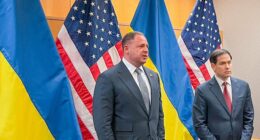Share this @internewscast.com
Hamas’ response stopped well short of fully endorsing each of Trump’s twenty points, including critical ones like demanding Hamas disarm and destroy their weapons, and that it play no role in governing Gaza in the future.
Yet Trump chose to focus on what Hamas did agree to rather than what it didn’t.

Hamas’s response drew a far more lukewarm response from even some of Trump’s staunchest allies.
“Hamas’ recent response to President Trump’s plan to end the war – which Israel had accepted – is unfortunately predictable. A classic ‘Yes, but,'” Senator Lindsey Graham wrote on X.
“No disarmament, keeping Gaza under Palestinian control, and tying hostage release to negotiations, along with other problems. This is, in essence, a rejection by Hamas of President Trump’s ‘take it or leave it’ proposal.”
Trump, however, was more willing to accept the statement as a positive development, even as he acknowledged there was still work to be done on finalising the details of the arrangement.
“We’ll see how it all turns out. We have to get the final word down in concrete,” he said in his video, taped from the Oval Office.
Trump had been waiting anxiously for Hamas to respond to his proposal over the last several days. In a call with Qatar’s emir on Wednesday, Trump inquired about progress, but was told it may take longer for the group to respond.
Communication problems with Hamas’ military leaders in Gaza contributed to the time it took to receive a response, as did divisions among Hamas leadership over elements of the plan, according to US officials, who were advised of the difficulties by regional partners this week.
Still, Trump was growing impatient, and issued the Sunday night ultimatum on Friday morning hoping it would spur Hamas into responding.
Ultimately, the response that arrived could have provided Trump an opening to declare Hamas intransigent, and green-light Israel escalating its assault – as he said he would do if Hamas rejected the plan. But Trump, in looking past the areas where Hamas appeared to differ with the plan, put Netanyahu in the difficult position of either accepting the response positively, or risking angering his top international ally.
Trump has been increasingly at odds with Netanyahu since reentering office in January, frequently engaging in tense phone calls with his counterpart over the unending nature of the war in Gaza and Israel’s expansion of the conflict beyond its borders – all moves that could imperil Trump’s chances of winning a Nobel Peace Prize.
So, too, have members of Trump’s base become more and more disillusioned with Israel’s war in Gaza as it nears its two-year mark, with some – including Representative Marjorie Taylor Greene – labelling Israel’s actions a “genocide.”
Most galling for Trump was the Israeli strikes in Qatar last month aimed at Hamas leaders, which Trump and US officials viewed as destabilising and harmful to ongoing efforts to negotiate a peace. Trump complained publicly the US wasn’t given time to intervene.–
The strikes, which drew universal condemnation from Arab countries, eventually prompted Trump’s team to begin work on the multipoint plan that became the proposal unveiled earlier this week, officials said.
In meetings in New York last week, top Trump aides – Witkoff and Kushner, reprising the Middle East adviser role he held in Trump’s first term – worked to get Netanyahu’s buy-in to the proposal, even as the prime minister appeared reluctant to sign on.
Trump’s aides, and Trump himself, were explicit in their conversations with Netanyahu that the plan was the best – and last – chance for a negotiated end to the war. They warned Trump’s mostly stalwart public support for Netanyahu and Israel could be at risk, according to US officials.
It was only after hours of discussion, and changing to some of the plan’s wording, that Netanyahu eventually agreed to get on board, according to US officials. Some of the changes alarmed Arab nations that had been briefed on the plan the week prior. But as Trump and Netanyahu were meeting in the Oval Office on Monday, the White House published the text – cementing the changes and putting Hamas on notice to agree.
As part of their meeting, Trump held a telephone on his lap while Netanyahu telephoned Qatar’s prime minister to apologise for strikes on Hamas leaders in Doha last month. The move was viewed as essential in advancing the negotiations, given the important role Qatar has played in mediating with Hamas.















